Repurposed Materials in Furniture Creation: Craft Character from What Already Exists
Chosen theme: Repurposed Materials in Furniture Creation. Explore practical methods, heartfelt stories, and design strategies that transform discarded wood, metal, and glass into furniture with soul. Join our community, ask questions, and share your upcycling journeys.

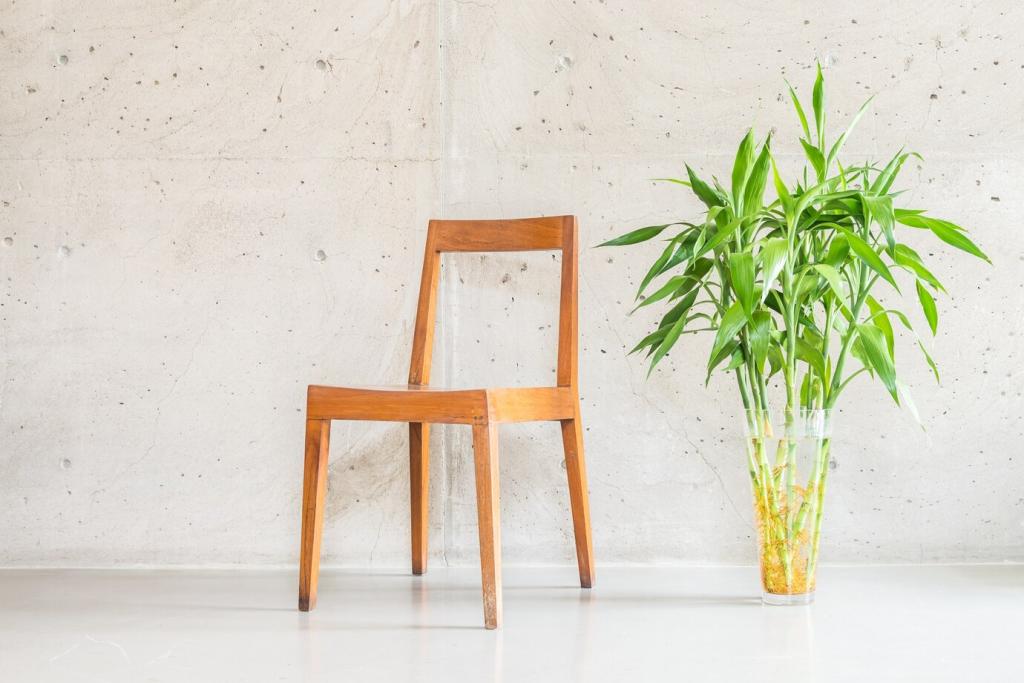

Why Repurposing Changes the Way We Build
Every offcut, dent, and nail hole is a narrative waiting to be reframed. Repurposing diverts materials from landfills while adding human texture to design, producing pieces that feel lived-in, honest, and irreplaceable.
Why Repurposing Changes the Way We Build
Hunt where stories gather: demolition sites with permission, community swaps, salvage yards, and family garages. Track provenance, ask about treatments, and photograph markings so the material’s past remains part of your furniture’s future.
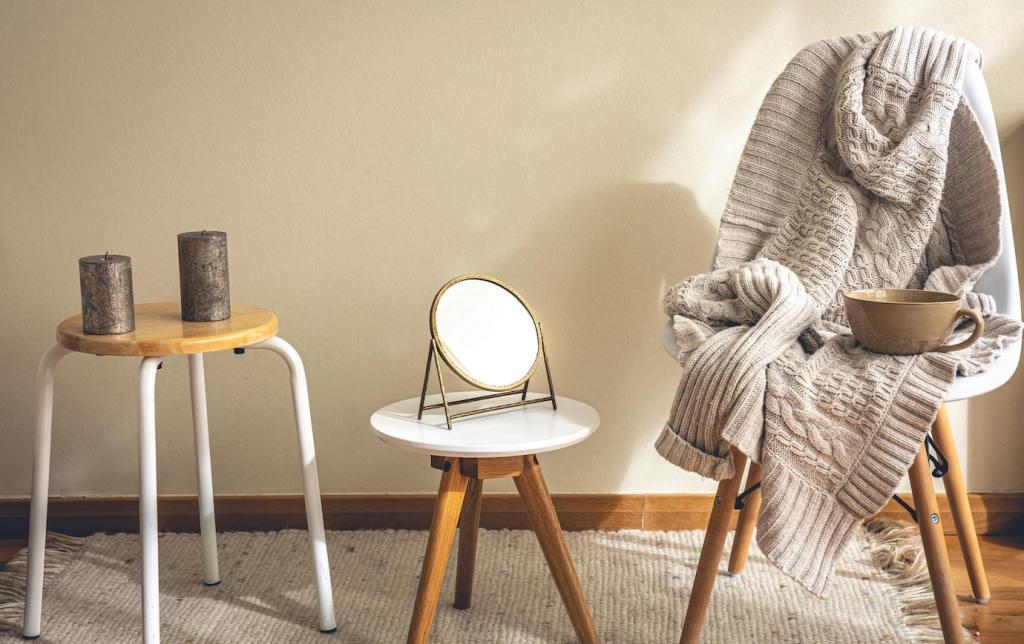
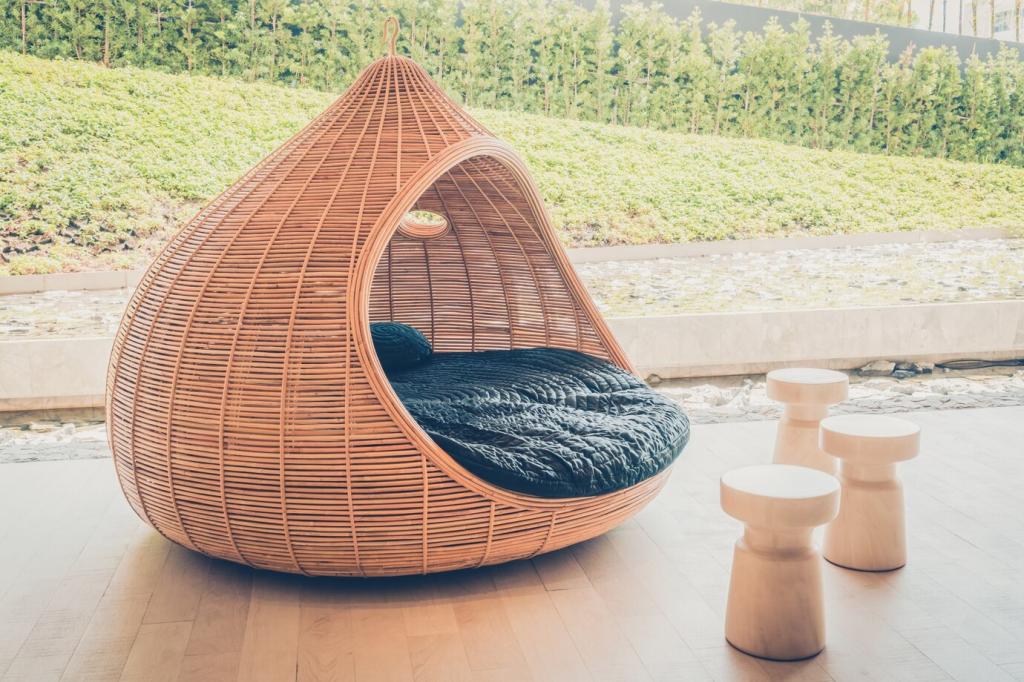
Material Spotlights: Pallet Wood, Barn Boards, and Industrial Metal
Not all pallets are equal: look for HT stamps, avoid chemical treatments, and prioritize hardwoods. Expect mixed thicknesses and nail shadows. Embrace color variation, or batch mill for uniformity when a cleaner aesthetic suits your space.
Material Spotlights: Pallet Wood, Barn Boards, and Industrial Metal
Centuries of sun and rain compress fibers, deepening grain and tone. Preserve saw kerf marks, but stabilize checks with bowties or epoxy. Photograph knots before cutting; you might design joinery that frames them intentionally.
Design Methods for Repurposed Builds
Joinery That Respects Imperfections
Irregular stock asks for forgiving connections: housed rabbets, floating tenons, and brackets that celebrate instead of hide. Template routing around voids turns flaws into features, while mechanical fasteners provide serviceable strength when wood movement is unpredictable.
Finishes That Honor History
Choose finishes like hardwax oil, soap, or shellac to amplify grain without plastic gloss. Spot-sand to keep saw marks readable. Test on offcuts, then document recipes so you can reproduce a tone you love.
Strength Testing Without Guesswork
Load test shelves with water jugs, check racking by diagonal push, and verify fastener bite in old fibers. Record results, upgrade where needed, and encourage readers to borrow your testing checklist for their next build.
Three True-to-Life Transformations
A Coffee Table from Shipping Pallets
When Mario’s new baby arrived, budget vanished but creativity didn’t. He milled two safe-stamped pallets, inlaid a metro map from veneer scraps, and burnished nail heads—creating a table that anchors family photos and late-night feedings.
A Writing Desk from a Retired Oak Door
A neighbor gifted a dented, solid-oak door with a brass keyhole. Planed lightly, the panel became a desktop; the keyhole now frames a cable grommet. Every email typed passes through a century of letters.
Restaurant Shelving from Fruit Crates
A café salvaged orchard crates stamped 1974. After fumigation and reinforcing corners with hidden splines, the team stacked modules into a honeycomb wall. Guests ask about harvests while choosing pastries, and the story sweetens each bite.
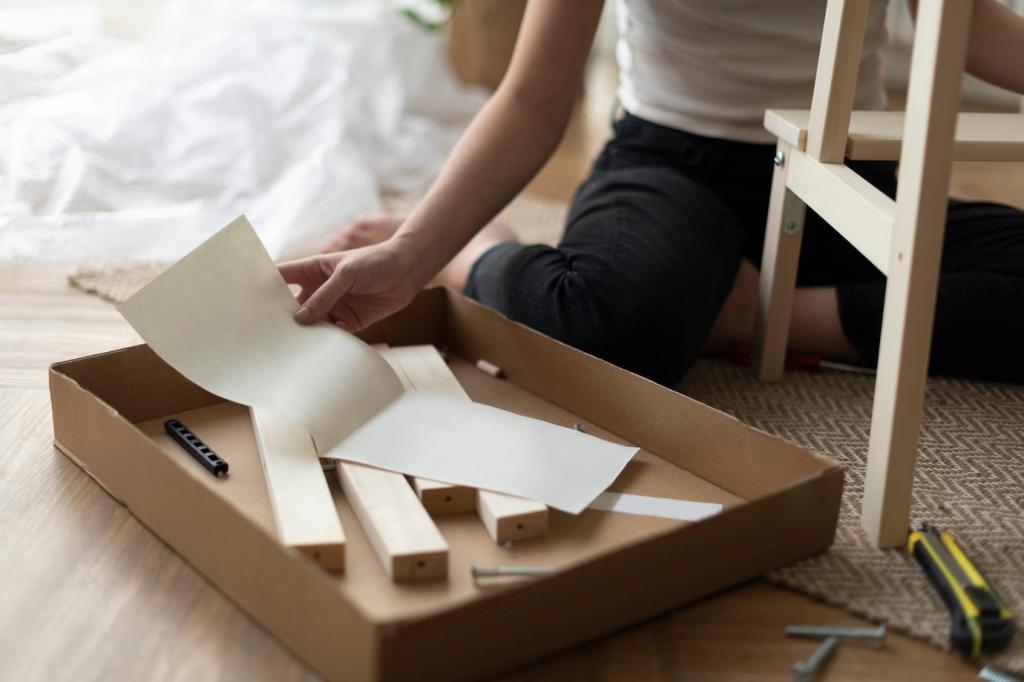
Footprint Math, Simplified
Estimate carbon saved by substituting reclaimed wood for new lumber, using published intensity factors. Consider avoided landfill methane too. Even rough math clarifies impact and motivates consistent material choices across future pieces.
Circular Economy at Home
Design for disassembly using screws, knock-down fittings, and reversible finishes. Label components, share cut lists, and invite neighbors to borrow parts. Furniture that evolves keeps materials circulating—and stories circulating with them.
Community Impact, One Build at a Time
Repurposed projects catalyze swaps, workshops, and tool libraries. Donate offcuts to schools, mentor teens on safe de-nailing, and host finish-testing nights. Teach publicly, and ask readers to comment if they want a local meetup.
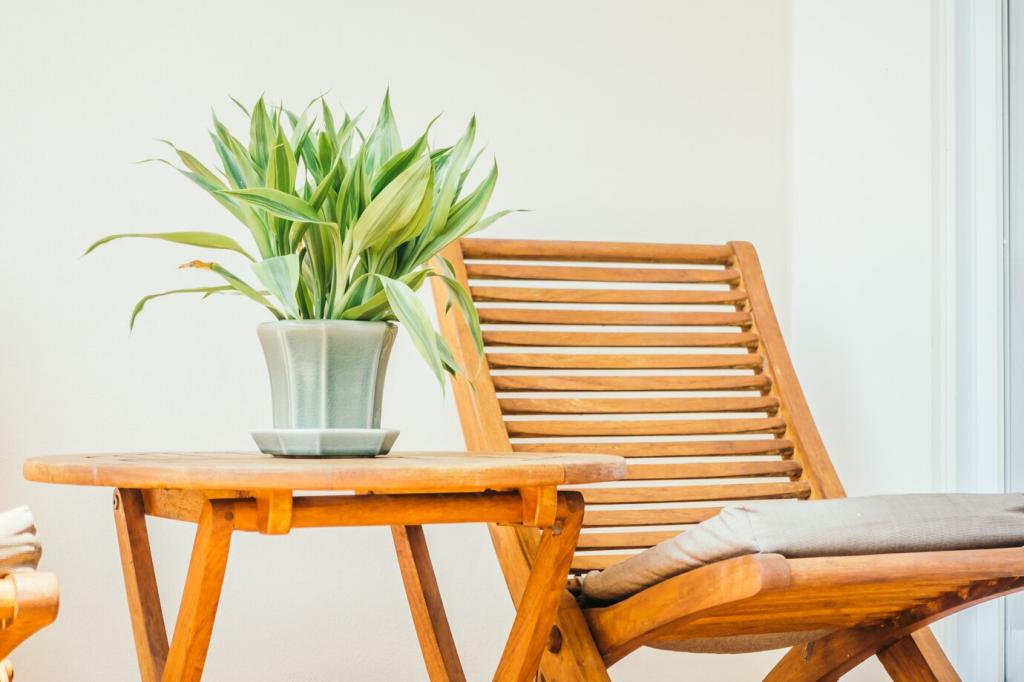

Your First Repurpose Project: A Crate Bookshelf
Gather three uniform wooden crates, sandpaper, screws, corner brackets, a square, and finish. If you can, select crates with legible stamps for storytelling. Photograph everything before modifications to document transformation and inspire others.
Your First Repurpose Project: A Crate Bookshelf
Dry-fit layouts on the floor, checking square and racking. Pre-drill, reinforce with brackets, then sand minimally to retain character. Add adjustable feet for uneven floors, and secure to studs for safety in homes with children.
